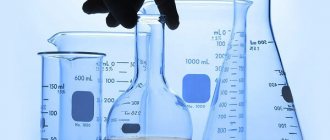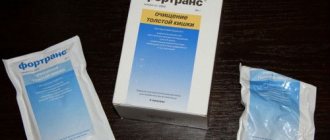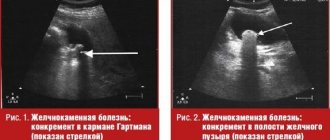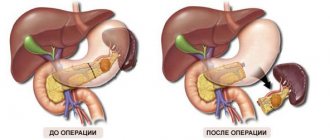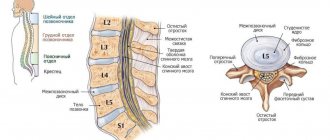How is the acidity of gastric juice determined?
Acidity is determined by installing sensors in different parts of the stomach. They determine the acidity level at different periods of time and send the data to a reading device. After their extraction, pH measurement results are generated based on the data obtained. The results obtained are deciphered by the doctor.
To obtain accurate data, it is recommended to measure for at least 24 hours. During pH testing, a person can eat food and drink liquid. Sensors record changes occurring after eating. Throughout the procedure, the use of carbonated drinks, alcohol, fried, fatty and salty foods is limited.
Prevention
Regarding preventive measures, one thing can be said that they all come from the causes of this problem. Thus, preventive measures include:
- Proper nutrition, eating foods rich in fiber, proteins and vitamins
- Balanced nutrition, that is, eating small portions
- Avoiding fatty and spicy foods
- Exclusion from the diet of any fast foods
- Avoiding alcoholic beverages or drinking them in reasonable quantities
- Regular examination for the presence of Helicobacter bacteria, which provokes the development of many diseases
- Avoiding stressful situations
- Timely treatment of any infectious diseases, as they can cause complications
If you nevertheless discover at least one of the above symptoms, then you should not waste time and try to cure this disease yourself. Time will be wasted, and there will be no positive result, will there be temporary relief. Only a doctor can make an accurate diagnosis based on research and prescribe treatment. It will take a long time to treat high acidity, but it is worth making every effort and completing the full course of treatment, since this gap will not disappear on its own!
What is pH-metry of the stomach
PH-metry is a diagnostic procedure that allows you to identify deviations in gastric acidity. To conduct the study, a special device called an acidogastrometer is used. The device reads information from pH probes, which in turn are placed in different areas of the gastrointestinal tract.
The procedure is often used in diagnosing various gastrointestinal diseases. It is highly accurate. With its help, it is possible not only to identify diseases, but also to evaluate the effectiveness of the therapy.
Indications for pH testing
This diagnostic test is used for:
- presence of heartburn, sour taste in the mouth or belching;
- chronic gastritis;
- Barrett's esophagus;
- gastroesophageal reflux;
- peptic ulcer disease.
pH-metry is also used to determine the effectiveness of treatment and assess the condition after gastrectomy. The procedure has contraindications, so before prescribing it, the doctor must conduct an initial examination and study the medical history.
Main types of procedure
The type of procedure is determined based on the duration of its implementation and the location of the probes. The following types of intragastric acidity measurement are distinguished:
- daily pH-metry of the stomach;
- short-term pH measurement;
- daily pH-metry of the esophagus;
- endoscopic pH-metry.
The most common measurement is daily measurement, the duration of which exceeds 24 hours. In some cases, pH measurement is performed during gastric endoscopy. This type of procedure allows you to determine acidity directly during examination of the gastrointestinal tract using a gastroscope.
To diagnose the disease, both daily and short-term pH measurements are used. The required type of measurement is selected by the doctor based on the results of the initial examination, complaints and individual characteristics of the person.
How is stomach acid measured?
From television advertising, everyone knows for sure that acidity needs to be normalized, wherever it is - in the mouth or in the stomach. However, before bringing something back to normal, it is necessary to determine in which direction and how large the deviation is.
Where it should be sour
Without going into details from the general chemistry course, let us remember that the acidity of the medium can be high (acidic medium) or low (alkaline medium). To assess it, the pH value is used: the lower the pH, the higher the acidity. A neutral pH - for example, water - is 7.0.
Throughout the human gastrointestinal tract, various digestive juices are secreted. Depending on the function of a particular area, they must have a certain acidity - otherwise digestion will not be effective. For example, in the mouth the pH level is normally above 7, the environment is alkaline (this is why teeth deteriorate so much due to reflux - the backflow of acidic gastric contents). The same is true in the esophagus. The environment in the stomach is acidic, and at the entrance and exit from it it is less acidic than in the central section. In the small intestine the pH is alkaline, and in the large intestine it is again acidic.
Archived: gastric intubation
Changes in the normal pattern of acidity are characteristic of many diseases, and therefore this indicator has never gone unnoticed by doctors. Previously, gastric intubation was used to determine acidity. A fairly thick tube-probe was inserted into the patient’s stomach for a long time, through which samples of the secreted juice were taken. First, secretion was assessed on an empty stomach, then so-called “test breakfasts” were administered through a probe - cabbage broth, meat broth, caffeine solution. The acidity of the obtained samples was examined “outside” the patient.
The disadvantage of the method was primarily its discomfort for patients. In addition, the result obtained was very general - approximately like “the average temperature in the hospital.” The probe took a mixture of all gastric juices, without taking into account which section and how “sour” the juice secreted.
Fine technique: pH-metry and endoscopy
pH testing began to come into practice in the 1960s. It is also not very pleasant for the patient, but it is still easier to tolerate: the inserted probe is noticeably thinner, and the time it spends inside is shorter. The main achievement in comparison with probing was an increase in accuracy, and here's why: along the entire length of the thin probe there are electrodes that measure acidity. Their position is chosen in such a way that it approximately corresponds to the esophagus, three sections of the stomach and the duodenum. The number of electrodes may vary depending on the purpose of the study.
However, both the height and size of the stomach are different for everyone, and the probes, albeit in several standardized sizes, are designed for the average, “typical” person. Doctors again wanted to increase accuracy, and they combined pH-metry with EGDS (examination using a flexible endoscope). During an endoscopic examination, you can measure acidity exactly in those areas that are of interest, make as many such measurements as you like, and ultimately get a complete “acidity map” of the stomach and its “surroundings.”
All inclusive program
However, sometimes this is not enough. In gastroesophageal reflux disease (GERD), when the contents of the underlying parts of the gastrointestinal tract from time to time enter the overlying ones, a single acidity measurement may not give anything. For such patients, daily pH measurements are used. In the same way, a thin probe with electrodes is inserted, but these electrodes are “able” to record all the collected information on a special device the size of a powder compact.
During the day, the patient with the probe leads his usual lifestyle: eats, works, walks, etc. Everything that happens to him - the emotions he experiences, changes in body position and physical activity, the quantity and quality of what he eats - he writes down in a diary. The doctor then compares these recordings with the information from the probe.
When is acidity tested?
Acidity testing is used in the diagnosis of gastric and duodenal ulcers, various gastritis, and GERD. It can be useful for chronic recurrent cough, which occurs in the absence of diseases of the respiratory system, as well as for pain in the heart area - of course, after a cardiac examination.
By the way, do not be surprised if you are sent for an ECG before performing pH measurements. Inserting a tube into the esophagus can trigger a heart attack, so you need to make sure there is no predisposition.
Be healthy!
Lidiya Kulikova
Photo istockphoto.com
Methodology and preparation for the study
Preparing for the procedure includes adjusting your diet. A few days before the procedure, the person will need to start eating a standard diet without spices and salt with three meals a day.
The procedure used depends on its duration. During short-term pH-metry, after the probes are installed, the person remains in a chair until they are removed. With daily measurements, after installing the sensors, a person can leave the hospital.
For long-term measurements, a person will additionally need to record the time of meals in a diary, describe general well-being, and indicate the time spent in a horizontal position.
The sensors are placed in the stomach as follows:
- The person assumes a sitting position.
- The nose and throat are treated with antiseptics.
- The probe is inserted through the nose or mouth. Administration through the nose reduces the likelihood of gagging and is very often used for short-term measurements.
Before the procedure, the doctor will consult the person in detail about how to behave. It is recommended to take the first meal during daily pH-metry no earlier than 40 minutes after installing the sensors.
Symptoms of altered acidity
Below we present the symptoms that you should pay attention to and in which situations you need to see a doctor and get examined:
Low pH manifests itself in the form of the following symptoms:
- decreased appetite;
- bad breath;
- bloating due to gas formation;
- stool disorders;
- pain in the stomach area.
With elevated pH, the following symptoms appear:
- heartburn with sour belching;
- heaviness in the stomach;
- pain in the stomach after eating;
- irregular bowel movements.
On average, men have more acid-producing cells than women. Therefore, in the stronger sex, an increased pH of the stomach is more often observed, while in women it is often decreased.
Cherepenko Lyudmila Vikentievna
doctor - therapist • doctor - cardiologist
If the condition improves, it is necessary to adjust the drug treatment. Be sure to consult your doctor to change your dosage or medication schedule. Our doctors by phone at any convenient time will help you find analogues of medications or recommend more effective drugs.
Online consultation
Decoding the results
The results of the examination can be obtained after reading information from the acidogastrometer. Only a qualified specialist can decrypt the data. The normal acidity value in the lumen of the body of the stomach on an empty stomach is 1.5-2.0 pH, in the antrum of the stomach - 1.3-7.4 pH,
The lower the pH, the higher the acidity of the stomach. Both high and low acidity are considered pathological. Depending on the severity of the deviation, appropriate therapy will be selected.
In some cases, adjusting the diet is enough to get rid of insufficient or increased acidity. To reduce the high acidity of juice, medications belonging to the class of proton pump inhibitors are used.
Contraindications to the procedure
Among the contraindications to pH-metry are:
- gastrointestinal bleeding;
- aortic aneurysm;
- bleeding disorders;
- severe course of coronary heart disease;
- narrowing of the lumen of the esophagus;
- hypertensive crisis and the possibility of an uncontrolled increase in pressure.
The study is carried out with caution in people who have tumors, erosions or varicose veins of the esophagus.
When performing measurements, various stimulants and inhibitors of gastric secretion are often used. This makes it possible to evaluate changes in acidity under different circumstances. If a person has contraindications to the use of baking soda, then it becomes impossible to conduct an alkaline test.
Benefits of use
The study is very popular in diagnosing gastroenterological diseases. Using pH measurement allows you to:
- understand whether inflammatory or ulcerative lesions of the stomach are associated with changes in acidity;
- evaluate the effectiveness of using antisecretory or secretory agents on a specific person;
- assess the daily rhythm of changes in gastric acidity.
If the procedure is carried out correctly, the person does not experience any pain. Discomfort and vomiting may occur. After removing the probe, the discomfort immediately disappears. Correctly performed pH-metry has no consequences or complications.
If you suspect acid-dependent gastritis or an ulcer, it is very difficult to choose an effective treatment regimen without conducting this study. Acidity measurements can be carried out during preventive examinations, especially if a person has a predisposition to decreased or increased stomach acidity.
Probeless study of gastric secretory function: acidotest
If there are contraindications to gastroscopy with swallowing a probe, indirect methods are used. One of them is a test using a special drug.
Probeless study of gastric secretory function, acidotest:
- The patient is given two tablets on an empty stomach, and after an hour and a half, urine is collected. After this, they give two more tablets and look at the color of the urine. The drug contains a resin that interacts with hydrochloric acid in the stomach.
- If there is too much of it, the resin turns the urine red. If a person has low acidity, the urine will have a standard yellow tint, because there will be no resin in the urine.
- If the environment is neutral, then the urine will take on a light pink tint. If the urine turns bright red, this indicates high acidity, the release of a large amount of acid in the stomach.
Acidity indicators
It will be useful to read the following articles on our website:
- The best drink recipes for weight loss
- How to make homemade diet mayonnaise?
- The simplest diet for the lazy
- Diet 6 cereals: menu for the week
- Features of the grapefruit diet
You should not self-medicate and make diagnoses. This is fraught with complications and the development of chronic diseases.



